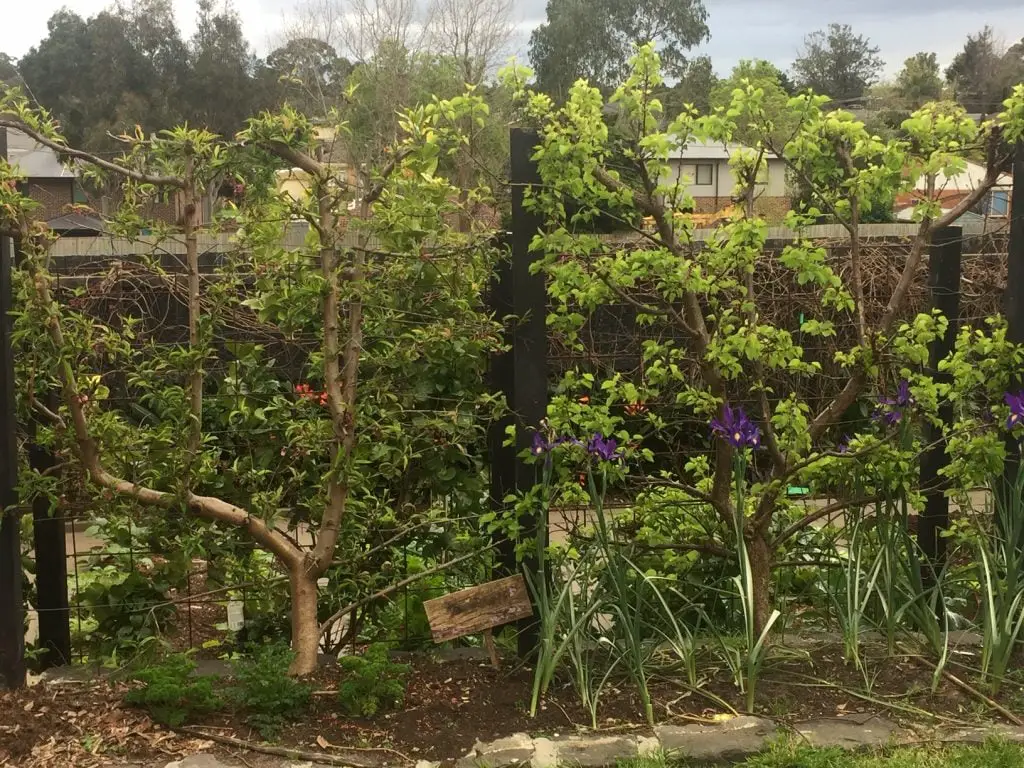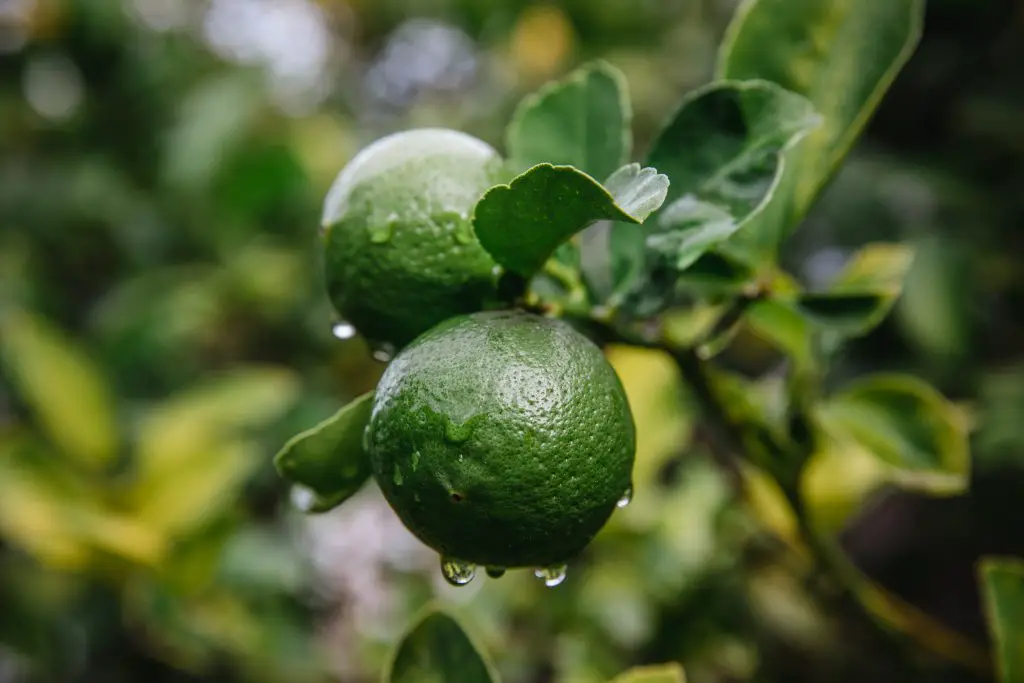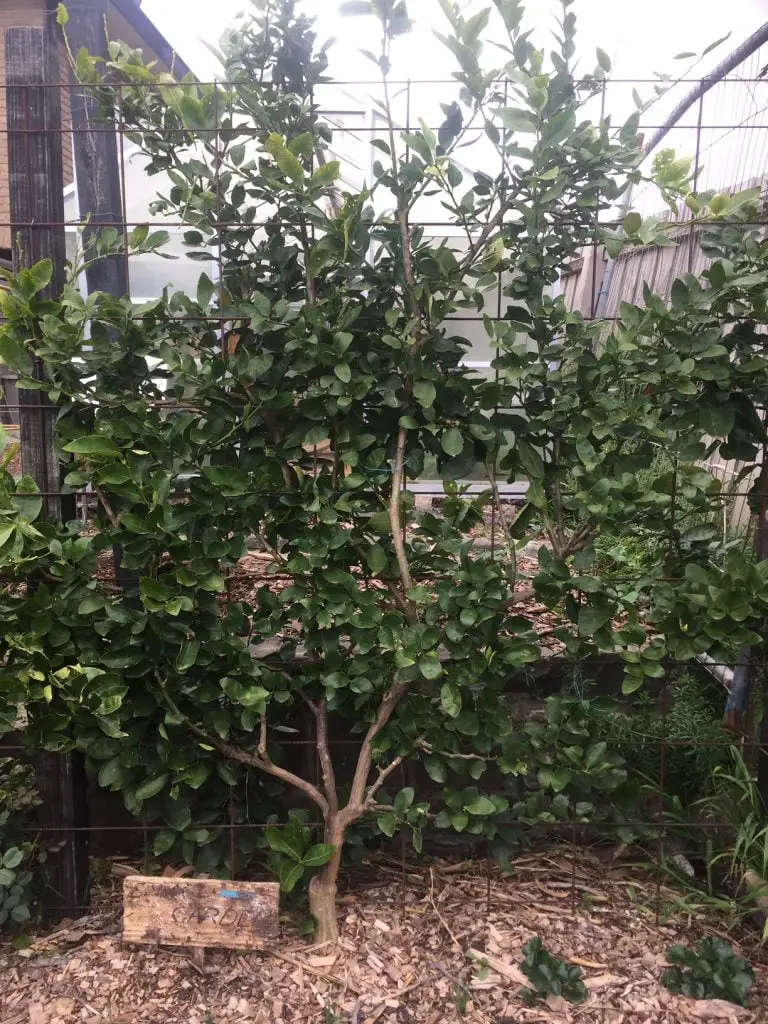Can You Espalier A Lime Tree? A Lime is a wonderful addition to any backyard garden. However, with yard sizes becoming smaller many gardeners are looking for ways to fit more into their backyard. One of the best ways to do this is by espaliering trees.
Espaliered trees take up very little space and can still produce a sizeable crop. However, this begs the question can you actually create an espalier using the lime tree, and is it difficult to do?
The answer is that almost any type of tree can be pruned to create an espalier tree including a lime tree. To create an espalier tree a support structure is required to help train the tree. The support structure is most commonly be positioned up against a wall or existing structure and will take up less than 30cm (1 ft) of space in front of the wall.
However, there is no reason why an espaliered lime can’t be positioned in the middle of the garden. Espalier trees are often used to divide the garden up into smaller spaces providing greater structure to the garden.

Are There Different Types Of Espalier Styles?
There are two main types of Espalier trees, formal and informal. Formal Espaliers are trees that have a predefined branch structure that is often pruned to create a symmetrical shape. There are many different patterns and shapes that can be created. However, by far the most common is the T shape. In the T shape, there is a central stem that has branches coming off either side of the main stem, at regular intervals.
The spacing of these branches is most commonly around 30 cm (12 inches) but this can vary. To maintain these branches in the desired shape a support structure is used. An example of a T-Shaped espalier is shown in the picture below. To read more about the different shapes of Formal Espaliers and how to create them, click here or watch the video below.
The second type of Espalier is an informal tree, that has no predefined branch structure. The branches are simply tied back onto the support structure and pruned frequently to create a two-dimensional shape.
Lime trees are most suited to this style of Espalier, as it is difficult to create a formal structure with Citrus trees. The reason for this is that the branches tend to lack the flexibility to be bent into formal shapes. This technique can be applied to a range of different trees. An example of this is shown in the picture below.

How To Create An Espaliered Lime Tree
Step 1 – Selecting The Location
When creating an Espalier Lime tree the first consideration is the location of the tree. Most trees that produce fruit, including Lime trees, require a warm sunny location. Lime trees prefer a rich, moist but well-drained soil and benefit from having organic matter added to the soil. The pH of the soil should ideally be slightly acidic though I wouldn’t fuss too much about this.
If you are really keen you can test the pH using household chemicals. To learn more about this click here.
Step 2 – Creating The Support Structure
Once a location has been selected the next step is to construct a support structure. Support structures can be created with a wide variety of materials such as Wire, Bamboo Stakes, Wood, and Wire Fencing Mesh. However, the easiest way to construct a support system is using Reo Mesh.
If the espalier is located next to an existing structure simply drill hooks into the structure and hang the Reo mesh on the hooks. If the espalier is not next to a wall erect two posts approximately 1.8 metres (6 ft) apart and attach the Reo Mesh.

When creating the support structure for the Espaliers it is important to recognize that it is not possible to know, in advance, the points that the tree will need to be tied to. As such having a grid-like support system like Reo Mesh is advantageous.
Step 3 – Selecting And Planting The Tree
The next step is to select a tree to purchase from the garden center. As a general rule, smaller trees are better for creating espaliers. This is because they are easier to train and are also lower in cost. Trees can be purchased on yougarden.com in the UK.
To plant the tree, dig a hole in front of the support structure in a central position. This will allow the tree’s branches to be distributed more evenly, across the structure. The hole should be about 30cm (1 ft) deep and 30cm (1 ft) wider than the pot the tree came in.

Once the tree is in the hole backfill it with soil. To avoid any air pockets firm the soil in with your heel. After the Lime tree is in the ground, water it in well and then spread a 5 to 10cm (2 to 4 inch) thick layer of mulch around the base of the tree. To reduce the chances of collar rot at the base of the tree make sure that the mulch does not come into contact with the trunk of the tree.
Step 4 – Creating The Espalier
When creating the Espalier, start by selecting the thickest vertical shoots on the Lime tree. Tie these shoots to the support structure using plant ties, string, or garden twine. When tying the tree to the structure it is best to use soft materials as using wire will damage the tree. The reason for this is the tree’s branches will thicken over time the wire will cut into the branches, impacting the development of the tree. The ties I would recommend for the is job are available on Amazon.
When you are starting to tie the branches to the structure, it is best to spread the branches across the surface of the support structure. This process will allow more room for fruits and flowers to develop. At this stage, if there are any major branches that are protruding outward from the structure and cannot be tied in easily, they should be removed.

Step 5 – On Going Maintenance Of The Espalier
To ensure your Lime trees remain healthy, it is important to water regularly. This is particularly important in the first few months after planting, as the roots of the tree are yet to fully spread out. It will also be necessary to reapply mulch on a regular basis to ensure that any moisture supplied to the tree does not evaporate.
As the tree continues to grow there will be a need to tie any new growth to the support structure. If this is not possible branches need to be removed to maintain the trees’ shape. In the growing season, this will need to be done, every 6 to 8 weeks. However, if the pruning is done regularly, the job will take less than 5 to 10 minutes to complete.
If you get busy during the year and do not have time to prune the tree it is not the end of the world. The tree can always be reshaped with a hard prune however, this is best done in summer as a hard prune in Winter will ensure strong regrowth.
Relevant Articles
How Much Does A Lime Tree Produce?
What Time Of The Year Do Limes Fruit?
Do Lemon Trees Lose Their Leaves?
At What Temperature Should You Cover Fruit Trees?
